With countless interior design styles to discover, understanding the key characteristics of each one can feel overwhelming. However, by familiarizing yourself with a variety of styles, you equip yourself with the vocabulary needed to define and refine your own aesthetic. After all, nearly every item in your home whether it’s Grandmillennial-inspired floral drapes or a roll-arm sofa with English Country charm fits into a distinct design category. Recognizing which style your preferences align with can make decorating and shopping for your space significantly easier.
Much like fashion, interior design spans far beyond just minimalism and maximalism. Many styles are rooted in specific historical periods, such as the geometric elegance of 1920s Art Deco, while others are shaped by regional sensibilities like the light textures, subdued colors, and clean finishes of Scandinavian design. You might link the sleek lines of midcentury modern interiors with the post-World War II era or recognize the energetic prints and bold hues that define a maximalist space. Whether driven by time, place, or culture, every interior style has its own name, mood, and signature elements.
Once you’ve built a solid foundation of design knowledge, the process becomes far more creative and enjoyable. As award-winning interior designer Nate Berkus puts it, “The best design projects were the ones where people broke all the rules.” At the end of the day, the most powerful design statement you can make is your own. That’s why it’s perfectly acceptable not to mention encouraged to blend multiple design styles. Even expert designers do it. As designer Annie Elliott explains, “Maintaining a consistent color palette throughout your house will blur the lines between styles,” allowing old and new to coexist seamlessly.
Before you begin transforming your space, it’s worth taking time to explore the most popular interior design styles. Understanding the core elements of each aesthetic not only helps you make more confident design decisions, but also empowers you to create a home that feels uniquely yours distinct from any other. Whether you’re drawn to timeless elegance, clean minimalism, or bold eclectic vibes, the journey starts with knowing your style.
Biophilic Design: Where Nature Meets Interior Harmony
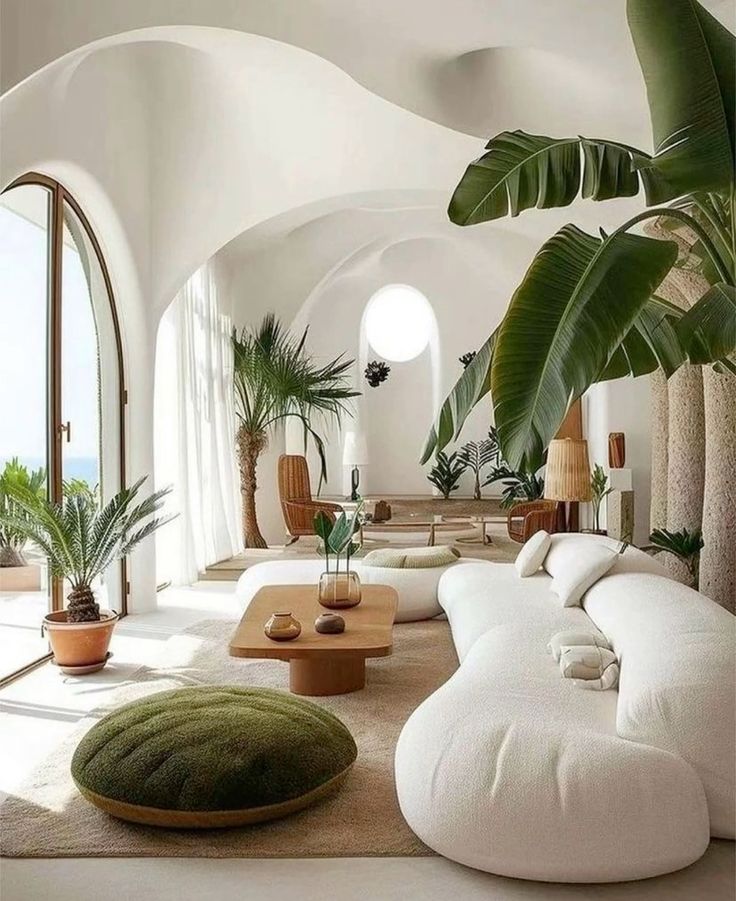
Biophilic interior design centers on one core idea: reconnecting people with nature through design. This style embraces the outdoors by incorporating elements like living plant walls, green roofs, and abundant natural light, creating environments that feel alive and restorative. Sustainable materials such as recycled wood, natural fibers, and eco-conscious fabrics further reinforce its environmentally friendly foundation. Whether through large botanical installations or simple potted greenery, Biophilic design promotes well-being, reduces stress, and brings an organic balance into everyday living.
Palm Beach Style: Vibrant Coastal Elegance with a Playful Twist
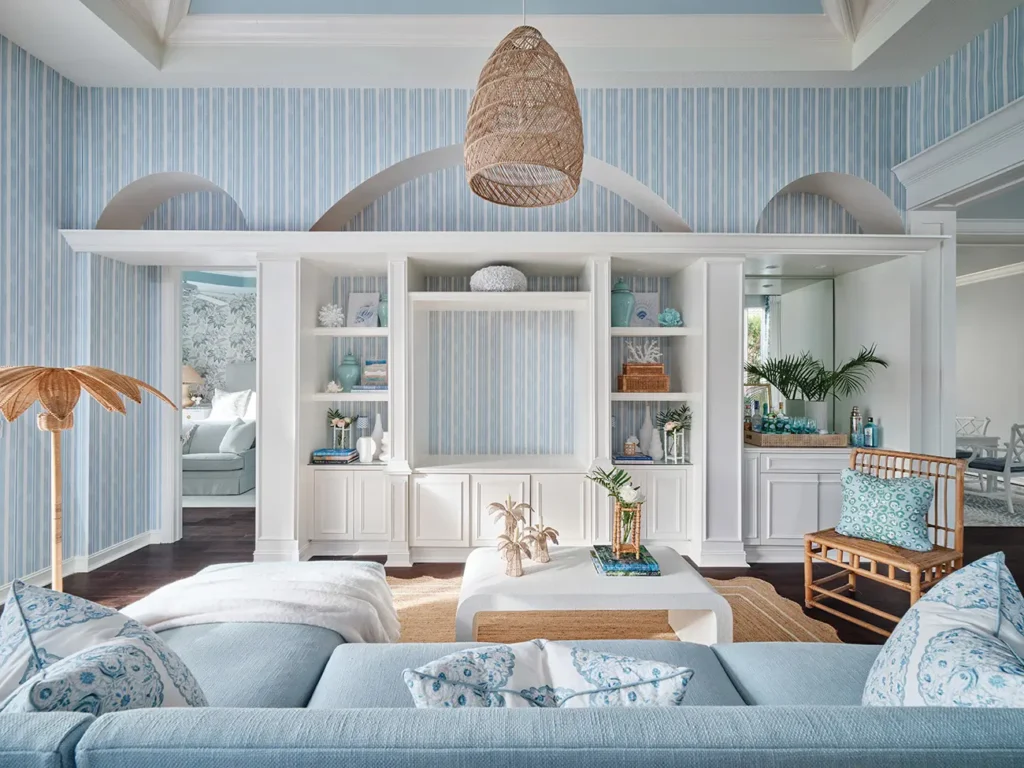
Palm Beach interior design captures the unmistakable charm of Florida’s upscale coastline where bold color palettes, sea-inspired prints, and preppy sophistication meet in perfect harmony. Characterized by cheerful hues like aqua blues, sunset corals, and lush greens, this style blends whimsical details such as scalloped edges, woven textures, and tropical motifs. Furniture often features playful silhouettes yet maintains an air of timeless elegance. Unlike typical coastal looks, Palm Beach style isn’t about being minimal it’s about being curated, colorful, and effortlessly chic. Think vibrant but refined cohesive but never too matchy-matchy.
Alpine Chic: Sophisticated Warmth Inspired by Mountain Living
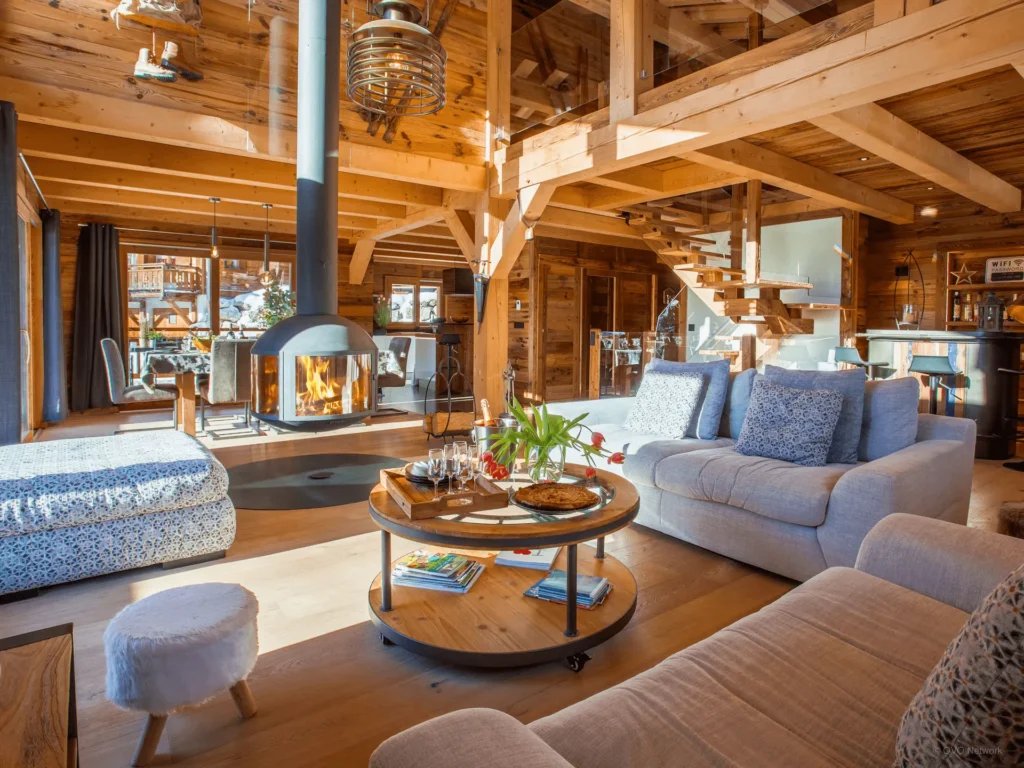
A luxurious twist on rustic charm, Alpine Chic captures the essence of elevated mountain interiors, drawing inspiration from Swiss chalets and the French Alps. This style blends rugged, natural materials like reclaimed wood, stone, and wrought iron with soft, high-pile textiles such as shearling, wool, and velvet to create a space that’s both inviting and refined. Unlike the rougher aesthetics of typical cabin décor, Alpine Chic leans into elegance and layering, often balancing rich textures with moody, cozy lighting. Whether you’re furnishing a winter retreat or simply craving a touch of chalet ambiance at home, Alpine Chic delivers warmth with sophistication and timeless style.
Midcentury Modern: Iconic Simplicity from the 1940s to 1970s
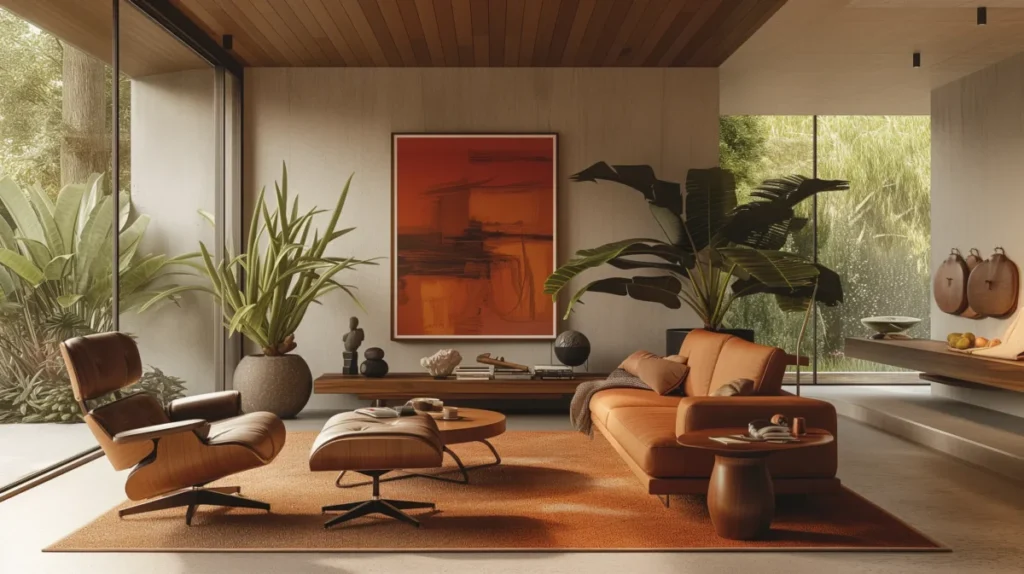
Midcentury Modern design refers to the influential architectural and interior style that emerged between the mid-1940s and early 1970s, known for its clean lines, organic forms, and functional elegance. Pioneers like Frank Lloyd Wright helped shape its foundation, blending innovation with timeless aesthetics. Signature elements of this era include warm wood paneling, earth-toned tiles, and sleek metal finishes such as chrome plumbing.
Influenced by Japanese minimalism, this style also incorporates natural light, open-plan spaces, and minimalist decor evident in features like folding screens and low-profile furniture. Today, Midcentury Modern remains a favorite for its blend of comfort, simplicity, and nostalgic charm, offering a retro yet refreshingly modern vibe for contemporary homes.
Japandi Style: Where Scandinavian Functionality Meets Japanese Minimalism

Blending the clean lines of Scandinavian design with the timeless serenity of Japanese aesthetics, Japandi is a harmonious fusion that prioritizes simplicity, functionality, and natural beauty. This interior design style is defined by low-profile furniture, natural materials like wood and bamboo, and a focus on craftsmanship. The color palette stays neutral and muted, often featuring warm beiges, soft grays, and earthy tones that create a peaceful, grounded atmosphere. You’ll frequently find paper lanterns, handmade ceramics, and wabi-sabi inspired décor celebrating the beauty of imperfection and authenticity. Japandi is more than just a style; it’s a lifestyle philosophy that embraces calm, intentional living and uncluttered spaces.
Transitional: A Balanced Blend of Traditional Charm and Modern Sophistication
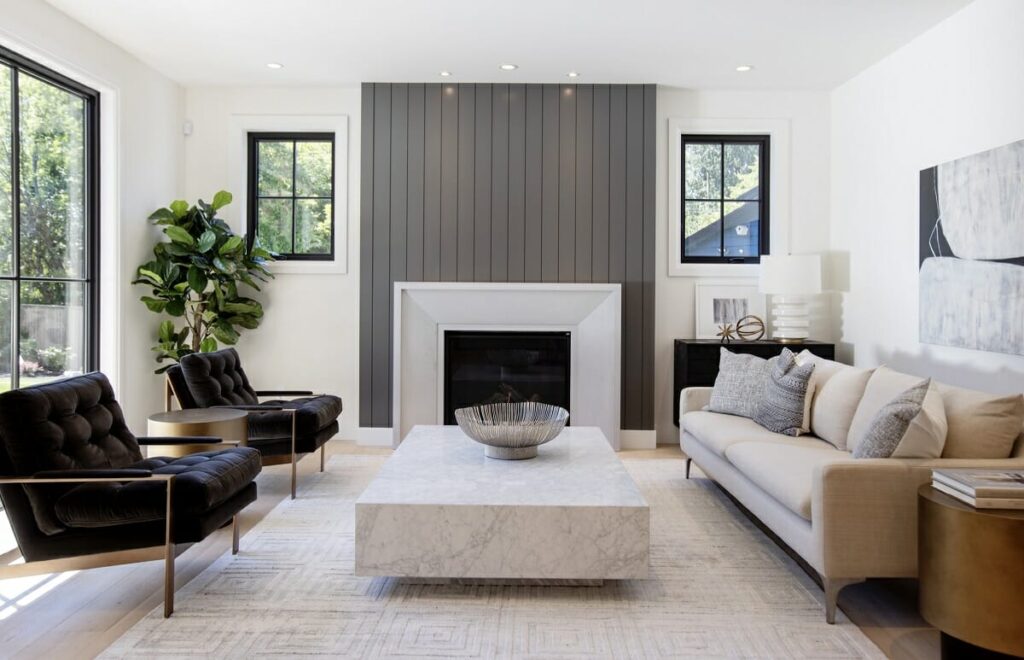
Transitional design is the art of finding harmony between classic elegance and contemporary simplicity. This style bridges the gap between traditional warmth and modern minimalism, resulting in spaces that feel both timeless and current.
In a transitional living room you might find a bench-seat sofa and an antique coffee table, subtly contrasted by sleek, modern side tables in stone and abstract, 21st-century artwork. The palette is often neutral, creating a calming backdrop where refined details and modern touches can shine.
Transitional interiors are ideal for homeowners seeking a versatile and inviting space one that respects heritage while embracing the present.
Rustic: Embracing Nature’s Raw Beauty with Timeless Warmth
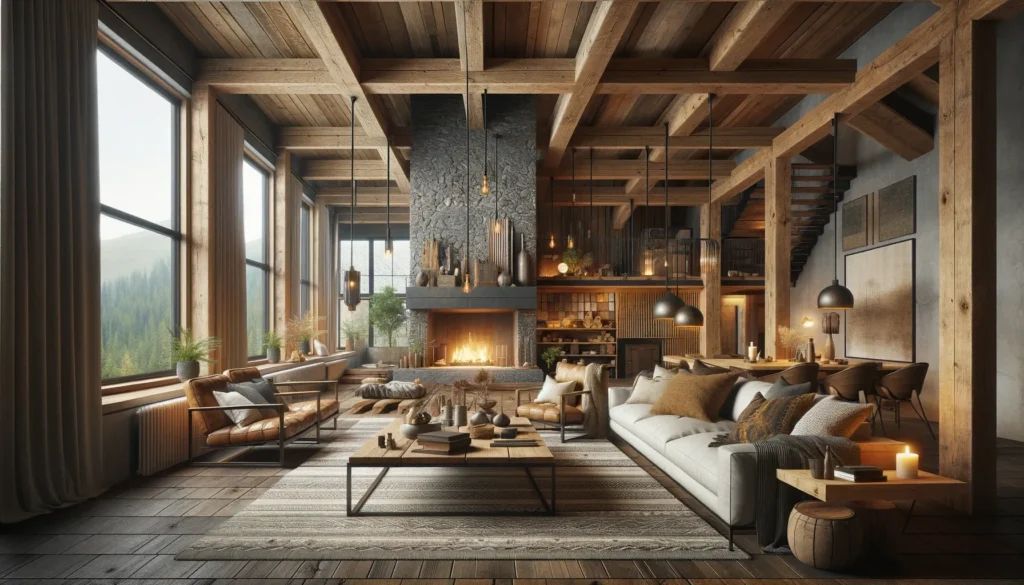
Rustic interior design celebrates the unrefined charm of nature through organic materials, textural richness, and a deep appreciation for craftsmanship. Rooted in simplicity and authenticity, this style brings the outdoors in with elements like exposed wood beams, unpolished stone, distressed finishes, and handmade furniture.
Unlike its softer cousin, Farmhouse style, rustic design leans into the raw and rugged where imperfection is part of the appeal. The color palette typically consists of earthy neutrals, inspired by natural surroundings: think warm browns, soft grays, and muted greens.
A perfect example is this Montana retreat designed by Kylee Shintaffer, where every piece tells a story from reclaimed wood surfaces to iron accents and tactile woven fabrics. It’s a style that feels grounded, cozy, and enduring.
Mediterranean: Timeless Elegance Inspired by Coastal Europe

Mediterranean interior design blends the relaxed charm of Spanish, Italian, and French coastal living into a sun-kissed, earthy, and effortlessly elegant aesthetic. This style is known for its airy spaces, natural textures, and a color palette inspired by the sea and sun.
The signature hues? Crisp whites and ocean blues, often balanced with terracotta accents, natural wood finishes, and stone or rattan textures. These elements create a breezy, warm atmosphere that feels both refined and inviting.
Whether you’re designing a villa-style retreat or want to infuse your home with a sense of sun-drenched serenity, Mediterranean interiors offer an elegant balance of tradition and nature.
Contemporary: Sleek Sophistication Meets Everyday Function
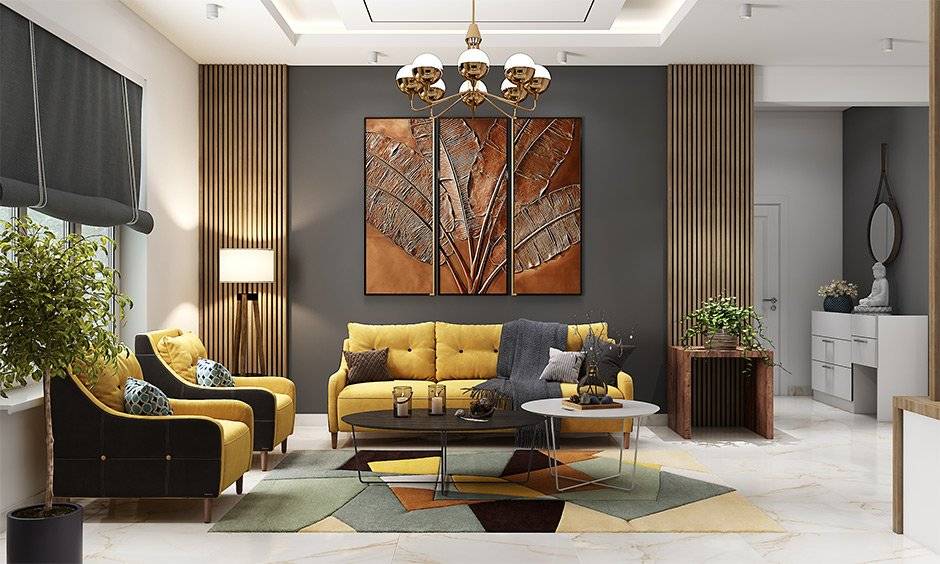
Contemporary interior design reflects the style of the moment evolving with current trends while maintaining a foundation of clean lines, open spaces, and understated elegance. Often mistaken for modern design, contemporary style is more fluid and versatile, blending innovation with comfort.
This aesthetic is defined by minimalist layouts, bespoke furniture, and cutting-edge technology seamlessly integrated into the space. Neutral color palettes often featuring whites, blacks, and grays set the stage for subtle contrasts in texture and form, such as polished metals, matte finishes, or natural stone.
Perfect for urban dwellers and design-forward homeowners, contemporary interiors offer a balance of effortless sophistication and practical livability.
Gustavian Style: Swedish Elegance from the Late 18th Century
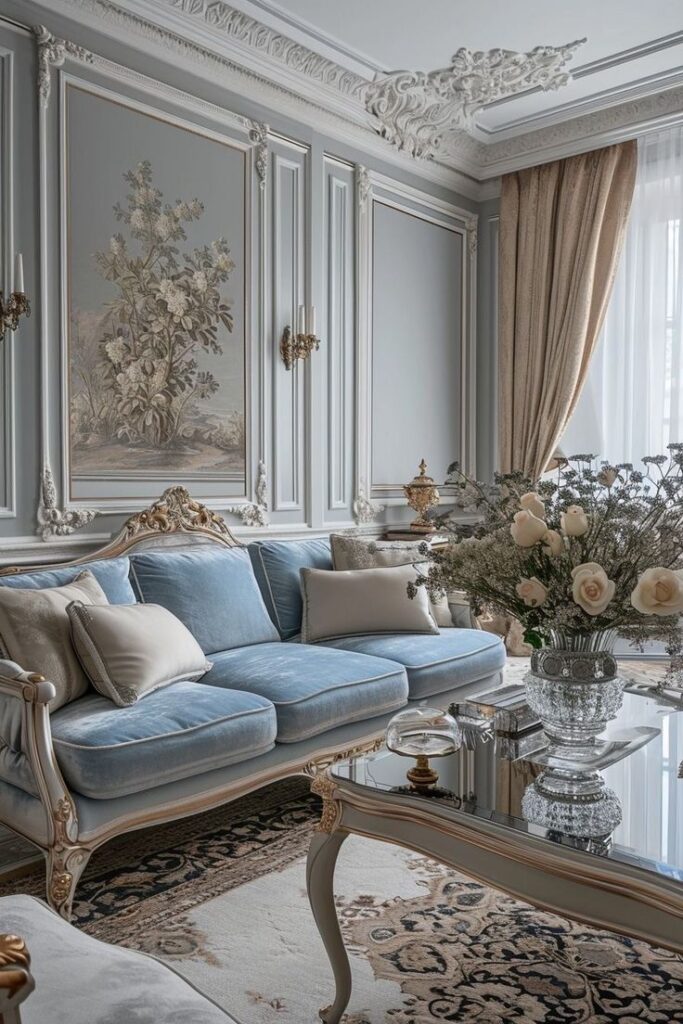
Emerging between the 1770s and early 1800s, the Gustavian style named after Sweden’s King Gustav III offers a refined, Nordic interpretation of French Rococo. This classic interior design aesthetic is known for simplifying the ornate, transforming curvy Rococo silhouettes into straighter, more architectural lines. Intricate millwork adorned doors, furniture, and columns, reflecting a deep appreciation for craftsmanship. A hallmark of the Gustavian era is its use of soft pastel tones that brighten interiors while maintaining a sense of sophistication. Furniture often featured slender, tapered legs, creating a light and elegant visual profile. Strong symmetry and balance were also key design principles, resulting in serene, orderly spaces that continue to inspire timeless Scandinavian interiors today.
Find Your Interior Design Style: From Classic to Contemporary With a Little Help from Zoryai
With so many stunning interior design styles out there, figuring out which one truly fits your personality and your space can feel overwhelming. Each style tells a story, shaped by history, culture, and mood. But don’t worry. Once you start recognizing the key elements that define each style, your personal taste becomes clearer. You’ll stop asking “Does this look good?” and start saying “This feels like me.”
From Grandmillennial floral drapes to the clean lines of Scandinavian woodwork, nearly everything in your home can be grouped into distinct design categories. And just like fashion, interiors go far beyond minimalism or maximalism. You’ll find styles influenced by eras (hello, Art Deco), regions (like Mediterranean coastal charm), or simply lifestyle choices (think Biophilic calm or Japandi balance).
And here’s where Zory steps in your intelligent, stylish design companion. As you explore the aesthetics below, Zory helps bring them to life in your own space. Use our AI-powered recommendations, explore curated furniture collections, and even visualize how pieces look in your actual room using our smart 3D preview.
Let’s discover the style that reflects you. And when you’re ready to turn inspiration into action, Zory is one click away.
